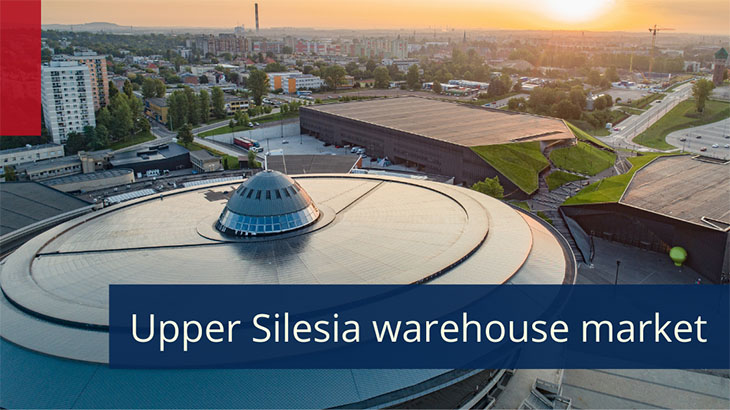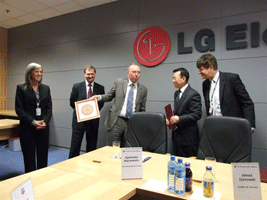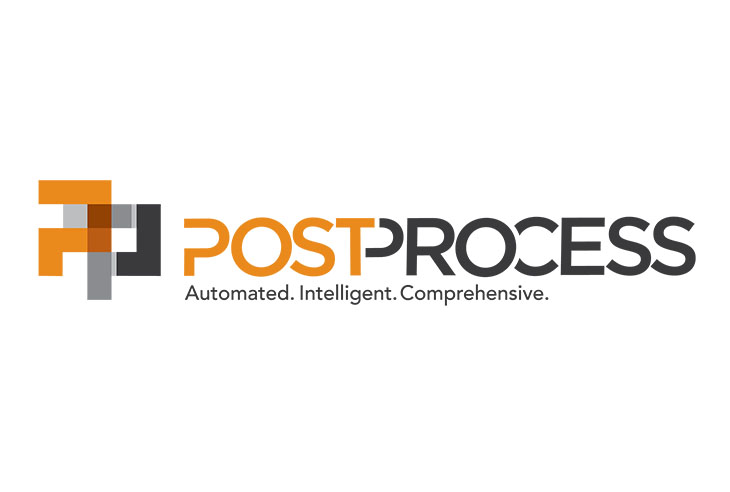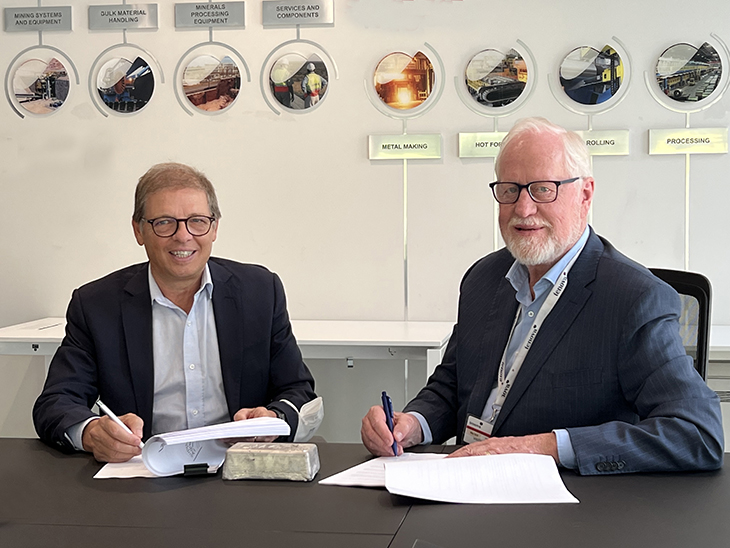Upper Silesia is the second largest warehouse market in Poland and one of the most important consumer markets in the country. The region is also a popular choice for companies seeking expansion into Europe, with a number of international distribution centres present. Robust occupier interest has helped maintain a balance between supply and demand, and ensured a stable level of vacancy. AXI IMMO decided to check the current trends and condition of the warehouse market in Upper Silesia.
The investment market in Upper Silesia was particularly active in the first six months of 2020. Logistics and warehousing assets with a combined GLA of 200,000 (including development potential) across five transactions changed hands. The European Logistics Investment (ELI) platform acquired three assets in two separate transactions (planned Panattoni Park Ruda Śląska II with 55,800 sqm and Panattoni Czeladź V with 35,500 sqm as well as existing Weber BTS with 50,000 sqm). Moreover, Savills Investment Management, Singaporean GIC and CGL Investment Holdings Corporation from China took ownership of logistics assets in the region in H1 2020 as a result of portfolio transactions.
„Upper Silesia is without a doubt one of the largest and most important logistics markets in Poland. It is also a key distribution centre for Central and Eastern Europe, ensuring smooth transportation of products for companies managing supply chains between Poland, Germany, Czechia and Slovakia, as well as countries further to the south of Europe. A highly developed infrastructure is a strong selling point for the region, with two motorways – A1 and A4 – as well as a dense network of national and regional roads, including Drogowa Trasa Średnicowa (DTŚ). Upper Silesia also boasts the most developed rail infrastructure in Poland as well as the Katowice-Pyrzowice international airport. This part of the country has longstanding industrial traditions in mining and metals. Over the years it has grown into a dominant industrial location within Poland, thanks in large part to its excellent infrastructure and the dynamic Katowice Special Economic Zone” – comments Anna Głowacz Head of Industrial at AXI IMMO.
Overall, 192,000 sqm of modern warehousing space was delivered to the Upper Silesian market in the first half of 2020 (+65% vs H1 2019), which brought total stock to 3.3m sqm. The region thus defended its spot as the second largest warehousing and logistics market in the country, after Warsaw. New completions in the 12 months to June 2020 stood at 649,000 sqm, which was the highest result of all markets within Poland. As at the end of Q2 2020, 390,000 sqm was under construction (-29% y/y), which was in turn the second highest level in Poland. The largest schemes in the pipeline are Hillwood Piekary Śląskie (42,500 sqm), Panattoni Bielsko Biała III (40,650 sqm), Hillwood Gliwice Sośnica (27,800 sqm) and DL Invest Psary (20,000 sqm). The share of space built on a speculative basis fell between March and June from 51% to 44%, which is a likely result of a more cautious approach of developers due to the Covid-19 pandemic. In addition, financing conditions have tightened, with banks expecting guarantees such as pre-letting of around 40-50% of space in a park.
“The key factors driving the dynamic growth of the Upper Silesian market are multiple investments into road infrastructure, a well-developed rail network as well as incentives offered by the Katowice Special Economic Zone (KSSE). For instance, the Tychy sub-zone together with Bieruń are a perfect location for logistics companies that want to take advantage of KSSE’s tax and other financial incentives. Meanwhile occupiers from the automotive industry often choose Bielsko-Biała, in large part due to the proximity to car factories in Slovakia and Czechia, with which they often cooperate. In this case however, an undulating landscape and a scarcity of available plots means occupiers have to accept higher rental costs compared to the rest of the region.” – adds Anna Głowacz from AXI IMMO.
The majority of submarkets within Upper Silesia offer headline rents in the region of EUR3.2-3.6 per sqm. The lowest rents are available in the Sosnowiec/Będzin/Dąbrowa area (EUR3-3.4 per sqm), while Bielsko-Biała is at the other end of the spectrum (EUR3.5-3.65 per sqm). Average effective rents oscillate around EUR2.2-2.6 per sqm, with developers in Sosnowiec/Będzin/Dąbrowa offering the most attractive incentives, resulting in effective rents of EUR2.1-2.6 per sqm. It is also worth mentioning Częstochowa, where effective rents are similarly attractive at EUR2.1-2.3.
“Production companies and logistics firms dominate the demand structure in the Zagłębie subregion, where towns of Mysłowice, Sosnowiec, Dąbrowa Górnicza or Będzin, are located. Multitenant schemes are dominant here. The main transportation corridor is the S1 expressway as well as the nearby A4 motorway. Meanwhile, the area around Gliwice, Ruda Śląska and Żory is typically selected by production and automotive occupiers. The proximity of the Sośnica interchange ensures very good access to the A1 and A4 motorways. Częstochowa is the youngest submarket, and its importance is likely to grow as further sections of the A1 motorway north towards the Tricity are being completed. This will ensure good access to Central Poland and from there - also to the northern part of the country. Currently, this subregion is a base for logistics operators and distributors” – adds Anna Głowacz from AXI IMMO.
High developer activity over the last two years has resulted in the vacancy rate going up from 4.2% at the end of 2018 to 8.6% at the end of Q1 2020, although this rate subsequently fell back at the end of Q2, to 6.5% (national average: 6.8%). The recent decline in space available immediately was a result of a high number of short-term transactions. Leases signed for less than 2 years accounted for as much as 42% of total space taken in Q2 2020. This constitutes the highest share of short-term leasing activity of all Polish markets. Meanwhile gross demand, excluding short-term leases, stood at 395,300 sqm in H1 2020 (-10.6% vs H1 2019). The largest leasing transactions of H1 2020 took place in parks managed by Panattoni. The developer was contracted to deliver two BTS (built-to-suit) facilities – one in Czeladź (67,000 sqm) for a producer of clothing and sports accessories, and one in Zabrze (50,000 sqm) for Weber – producer of coal, gas and electric barbecues. In addition, a confidential retail occupier signed a 35,000 sqm lease in Panattoni Park Gliwice III. Logistics operators, retail chains and automotive companies have been the most active groups of occupiers. Overall, firms from these sectors accounted for 67% of occupier demand in the Upper Silesia market since the start of 2018.
More information about AXI IMMO on www.axiimmo.com



























